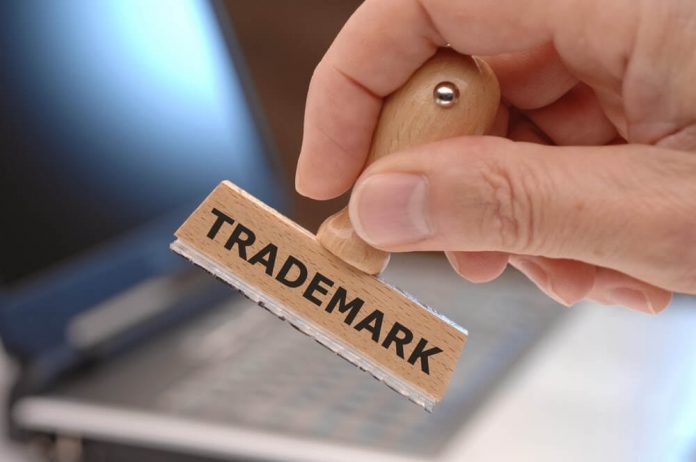This article is written by Vijpreet Pal and Saloni Agrawal.
Table of Contents
Introduction
Due to the prevalent situation of the Covid-19 pandemic worldwide coupled with lockdown imposed, the Internet has become part and parcel of everyone’s life leading to the proliferation of Internet commerce. Widespread usage of the Internet is giving rise to novel issues in the field of trademark law as well. E-commerce companies generally use Domain names as their company names. This article tries to delve into the rationale behind whether the trademark protection can be accorded to a gTLD (generic Top-Level Domain) name combined with a generic SLD (Second Level Domain) name in light of the recent SCOTUS judgment of USPTO v. Booking.com. This article will also evaluate the Indian legal community’s treatment of ‘Generic.com’ as a trademark.
Introducing domain names and trademark
The Domain name has two parts, one is TLD i.e. Top Level Domain, which signifies the source of the goods/ services i.e. online and another is SLD which is identical to a particular site owner. ‘The USPTO policy till now stated that a trademark can’t be accorded to the ‘Generic.com’ mark as TLDs (.com) is part of every URL and hence unprotectable’ 1 and ‘sheer addition of generic SLD can’t turn it into a protectable mark.’ 2 ‘A generic term refers to the genus of which the particular product or service is a species’ 3 and in the words of Lanham Act ‘incapable of becoming trademarks’.
To know more about Trademark Registration please visit
Analyzing the scope of “Generic.com” via the judgment of USPTO v. Booking.com
SCOTUS ruling in the Booking.com case with 8-1 majority stated that “Generic.com” marks can be granted only limited trademark protection under some specified conditions. In the present case generic term ‘booking’ coupled with ‘.com’ has acquired descriptive character and ‘unlike the generic mark, a descriptive mark can be awarded trademark protection and registration in the principal register if it has acquired secondary meaning.’ 4 Through the application of Bedrock Principle of Lanham Act, the Supreme Court relied on the Survey report which mentioned that 74.8% of the consumers perceive “booking.com” as brand name and not a generic category of goods or services, thus it has gained a secondary meaning and qualified enough for federal registration.
The court also got rid of the confusion regarding how far this registration extends stating that though the web search result involves ‘booking.in’ when searched for ‘booking.com,’ trademark protection would not be automatically extending to ‘booking.in’ mark. On the contention of USPTO regarding the anti-competitive possibilities in the marketplace due to monopoly status conferred to a domain name, the Court clarified that protection has only been granted to ‘booking.com’ mark and the usage of a generic term called ‘booking’ will be protected through the Doctrine of fair use. The doctrine states that no monopoly has been conferred on ‘booking’ and people are free to bonafide use it without the fear of infringement.
Back falls in the decision
The findings of the judgment have opened the Pandora box leading business owners to file for registration of trademark by the mere addition of ‘.com’ to a generic term. The judgment is inconsiderate to a large amount of money spent on substantiating that a particular generic term has acquired secondary meaning. Exclusively in the present case, the ‘booking.com’ has waived off its right to sue for infringement but still, the fact remains that they have been granted a monopoly over the mark leading to multiple anti-competitive practices in near future as Justice Breyer predicted while delivering the minority judgment. Precariousness remains to the claims of sites like ‘hotelbooking.com’ or ‘my-booking.com’ etc.
Understanding position of India
In India, the registration of domain names as trademarks is governed by the Indian Trade Marks Act, 1999. Section 9(1) of the Trademark Act, 1999 prohibits registration of generic trademarks. However, Section 32 provides the exception for the same, stating that if the trademark gets registered in breach of sec 9(1) of the act and acquires a distinctive character for which it is registered then the same shall not be declared invalid. Unlike USPTO, Indian Trade Marks Registry has a liberal stand on registering generic domain name trademarks. It can be inferred from the fact that Booking.com (2298594) is already a registered trademark in India. Though, the owners of such generic domain name trademarks have a limited right for the enforcement of these trademarks.
The Bombay HC dealt with the dispute of passing off between shaadi.com and secondshaadi.com in the case of People Interactive (India) Pvt. Ltd. v Vivek Pahwa & Ors. The court held that the word ‘Shaadi’ is generic and commonly descriptive. In two different cases, Bigtree Entertainment Pvt Ltd v. Brian Seed SportainmentPvt ltd and Bigtree Entertainment Pvt Ltd vs D Sharma, the owners of the ‘bookmyshow.com’ approached the Delhi HC, in these two different cases, asking for the injunction on the use of ‘bookmysports.com’ and ‘bookmyevent.com’ by the respondents respectively. The Court in both the cases ruled in the favor of the respondents presenting the reasoning that the prefix used by the petitioner ‘bookmy’ in its mark was descriptive. The prefix aptly described the business involving the booking for a show or an event for the interested consumers. The Court emphasized that the plaintiff, for the grant of the protection, was unable to show that the prefix ‘bookmy’ had acquired a distinct or secondary meaning. This rationale stands with the reasoning given by the SCOTUS in the ‘booking.com’ decision.
Resolving the conflicts
As mentioned earlier, TLD is a part of the domain name. TLD consists of various groups which includes gTLD i.e. generic top-level domain (.com, .net, etc.), cc TLD i.e country code top-level domain (.in, .au, .uk, etc.) and new gTLD i.e. new generic top-level domain (.museum, .name, .bank, etc.). The decision of ‘booking.com’ by the SCOTUS has again stirred the discussion regarding the dispute that arises between the various groups of TLD. There are two pertaining questions. First, whether the trademark ‘generic.com’ will extend to the ‘generic.in’? Another is about the new perspective of the new generic top-level domains. The question is what will be the impact and the nature of the disputes regarding the extension of trademark ‘generic.com’ to ‘generic.hotels’ or ‘generic.name’ and how will they be resolved? The second question can be understood with the example of Mercedes. ‘Most of us will recognize the owner of Mercedes and ‘mercedes.com’ as Mercedes-Benz. But Mercedes can also be the name of a girl. The dispute between ‘Mercedes.car’ and ‘Mercedes.name’ can be resolved easily. But what about ‘Mercedes.email’? Both Mercedez-Benz and the girl with the same name will be interested in having the new gTLD ‘.email’.’ 5 The second question is also important in this context, perceiving from the fact that ‘booking.com’ has already applied for the ‘booking.hotels’.
Uniform Domain Name Dispute Resolution Policy (UDRP) is the universally accepted policy for resolving disputes relating to domain names. India has its .in Domain Name Dispute Resolution Policy (INDRP) which is based on UDRP. Both UDRP and INDRP direct the dispute between the trademarks and domain names to Arbitration. Therefore, the dispute between gTLD and ccTLD will be subject to Arbitration if the complaint is brought in the case where the registrant has no legitimate interests in the domain name, the domain name is confusingly similar to the trademark at issue and the domain name has been registered and/or is being used in bad faith.
Conclusion
As of now granting trademark protection is pre-requisite to cater present circumstances of Internet Commerce favorably. Trademark protection holds to be necessary while making claims of infringement etc. Though many arguments were raised against granting of trademark protection to ‘Generic.com’ mark like that of giving rise to anti-competitive practices, monopolization of the combination of generic.com mark but all that are fallacious. This piece of article has dealt with the aspect that the protection is not given by just mere addition of generic term with the TLDs but there are certain specified conditions and circumstances which are required to be fulfilled like the generic.com mark must have acquired secondary meaning which has to be proved from case to case basis and this is no way an arbitrary granting of trademark protection. Also, the generic term can still be used by others in good faith. Hence, it is concluded that trademark registration can be extended to ‘Generic.com’ mark to the extent dealt in the piece above.
References
1. United States Patent and Trademark Office Examination Guide No. 2-99, Marks Composed, In Whole or in Part, of Domain Names (visited Sept. 29, 1999) (http://www.uspto.gov/web/offices/tac/notices/guide299.htm USPTO Examination Guide 2-99).
2. Goodyear’s India Rubber Glove v. Goodyear Rubber Co. (128 U.S. 598, (1888).
3. Abercrombie & Fitch Co. v. Hunting World, Inc., 537 F.2d 4, 9-10 (2d Cir. 1976).
4. Wal-Mart Stores, Inc. v. Samara Brothers, Inc., 529 U.S. 205, 211 (2000).
5. Christine Haight Farley, “Confusing the similarity of Trademark Law in domain name disputes”, Washington.
6. College of Law Research Paper No. 2019-14.
LawSikho has created a telegram group for exchanging legal knowledge, referrals and various opportunities. You can click on this link and join:
 Serato DJ Crack 2025Serato DJ PRO Crack
Serato DJ Crack 2025Serato DJ PRO Crack











 Allow notifications
Allow notifications



